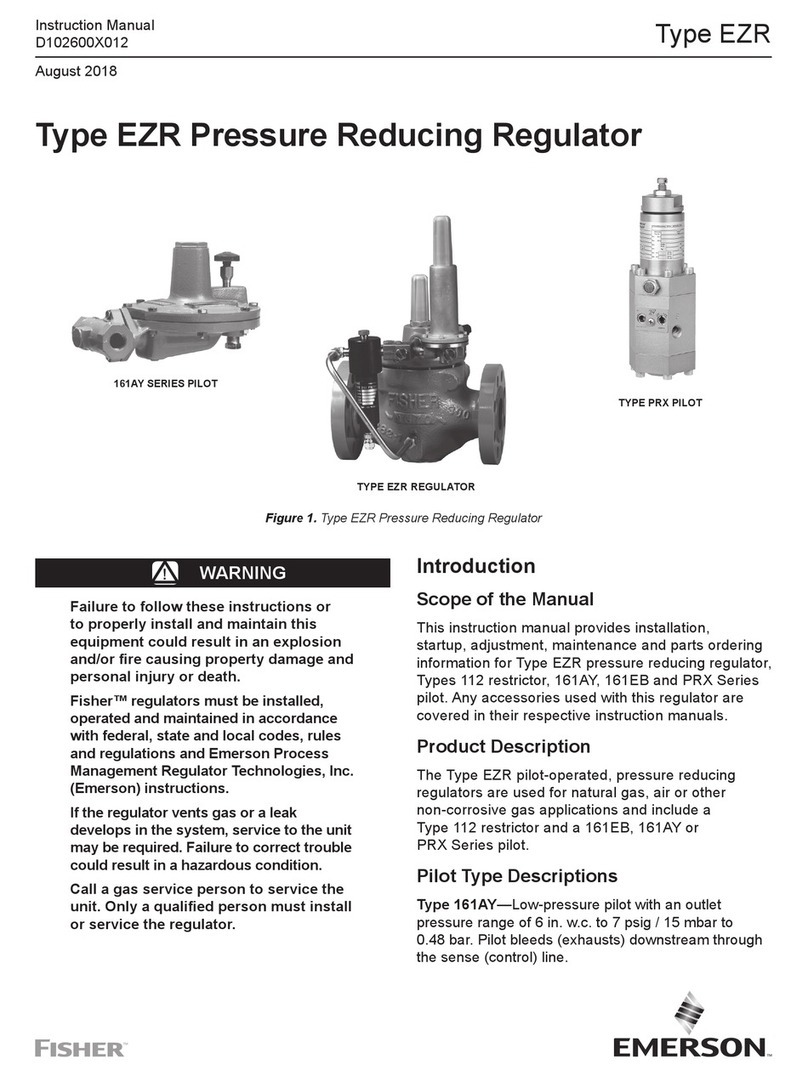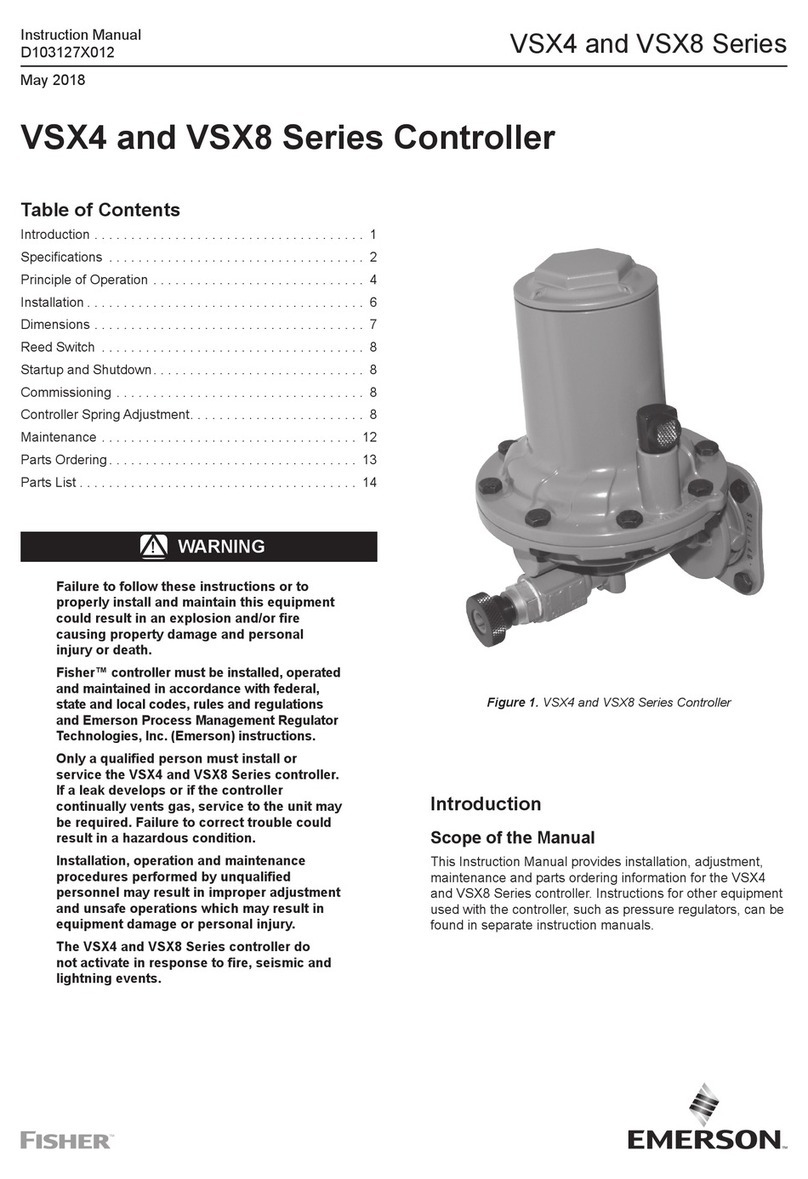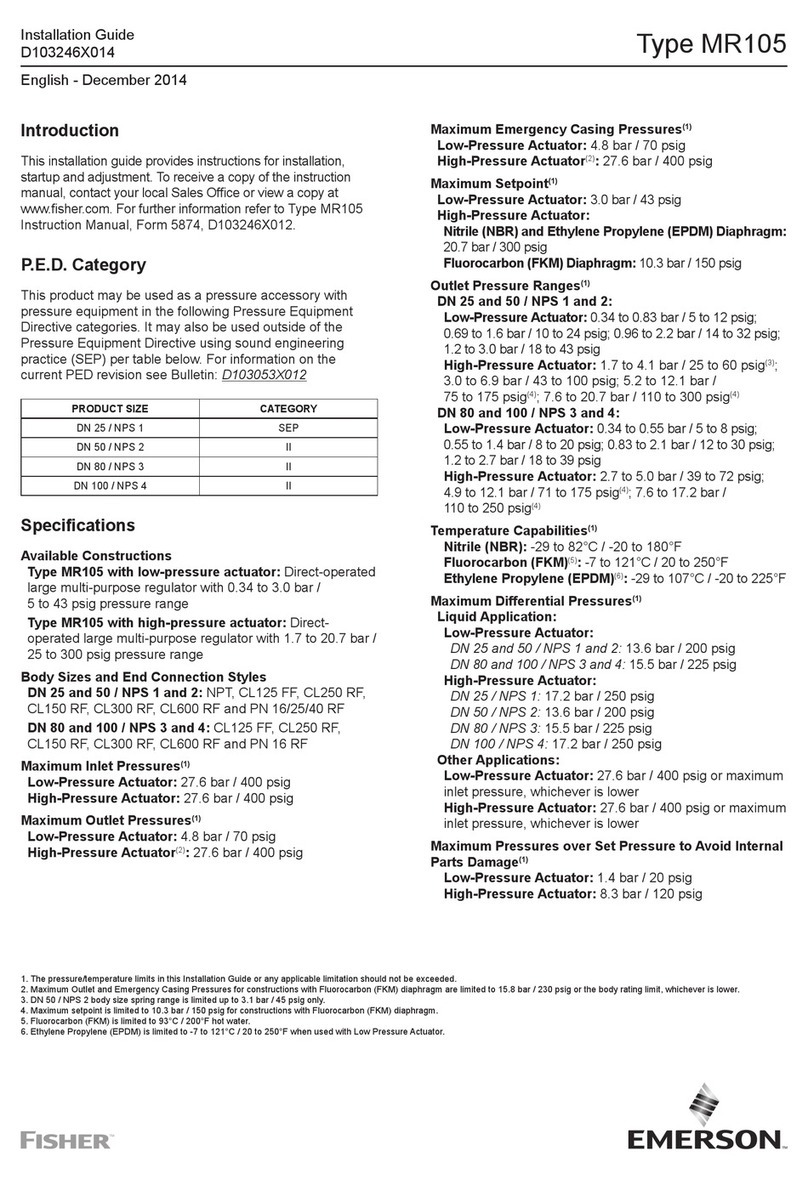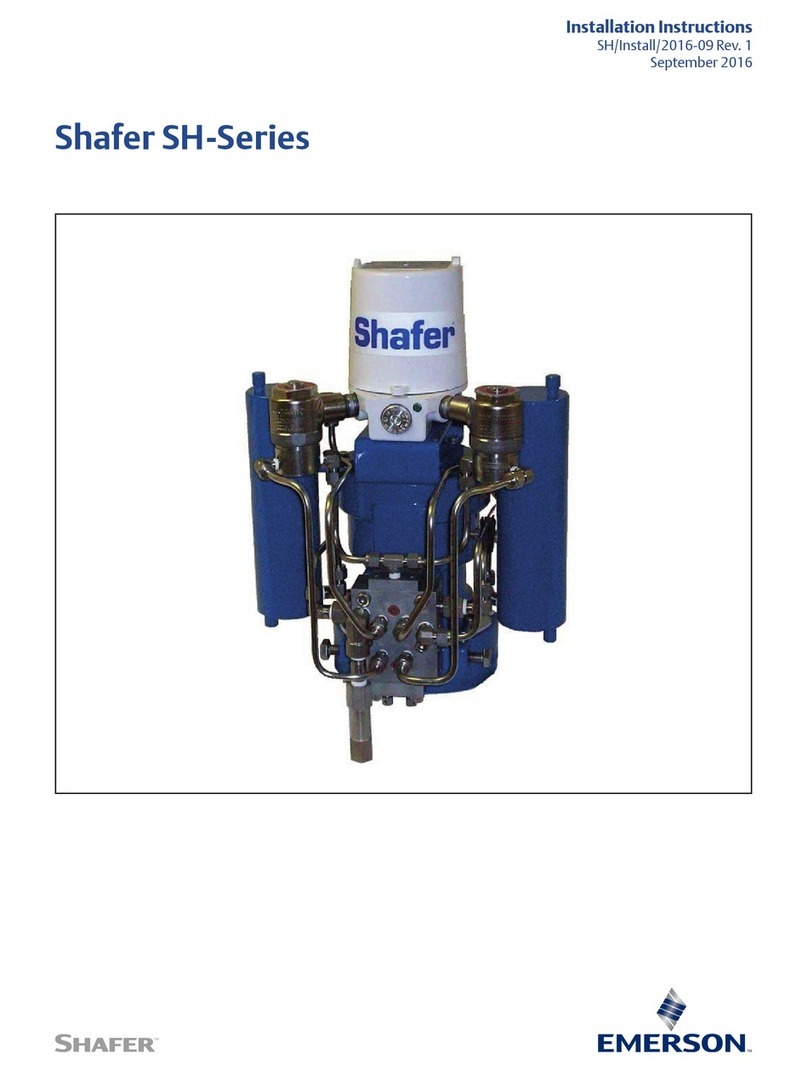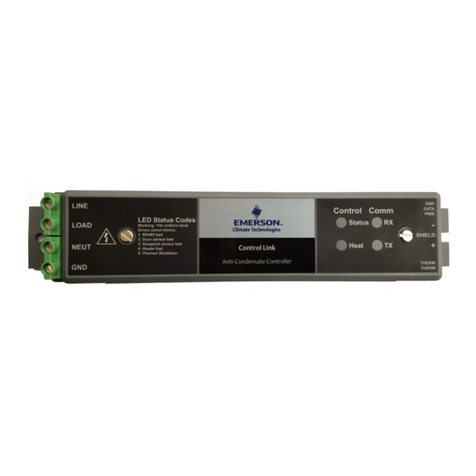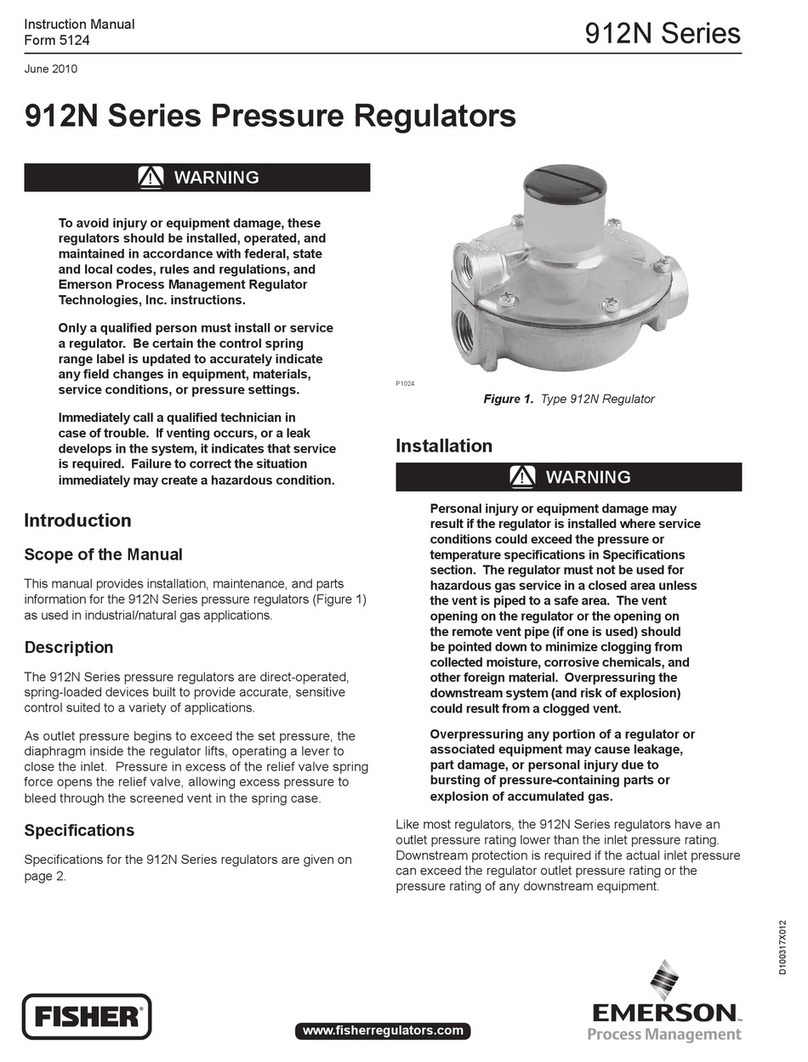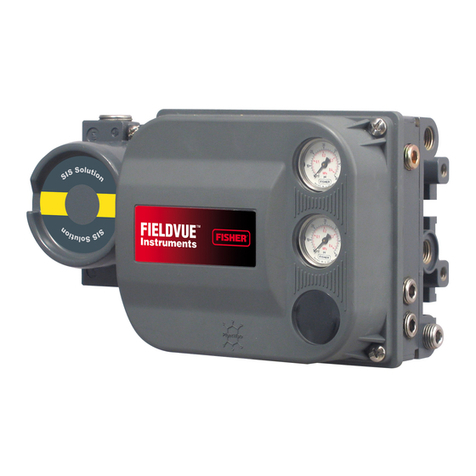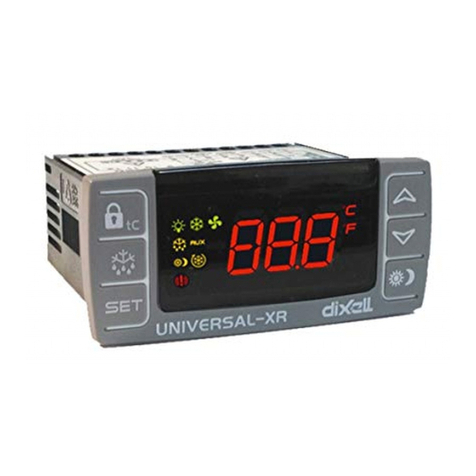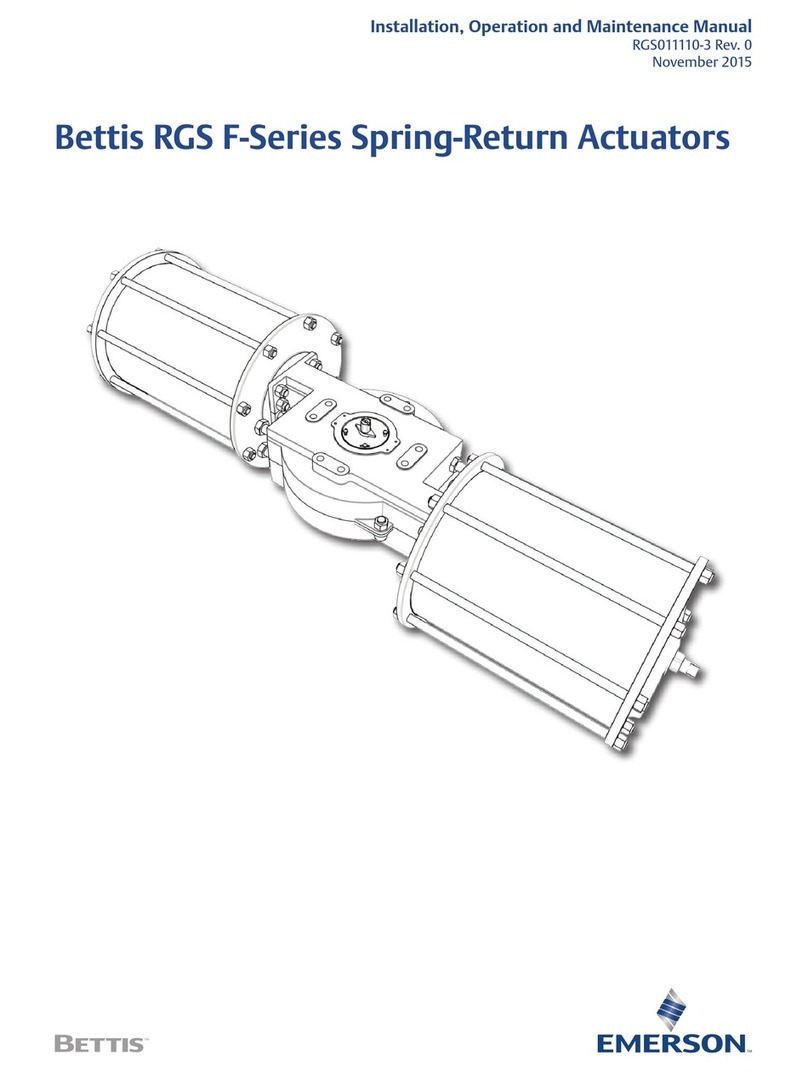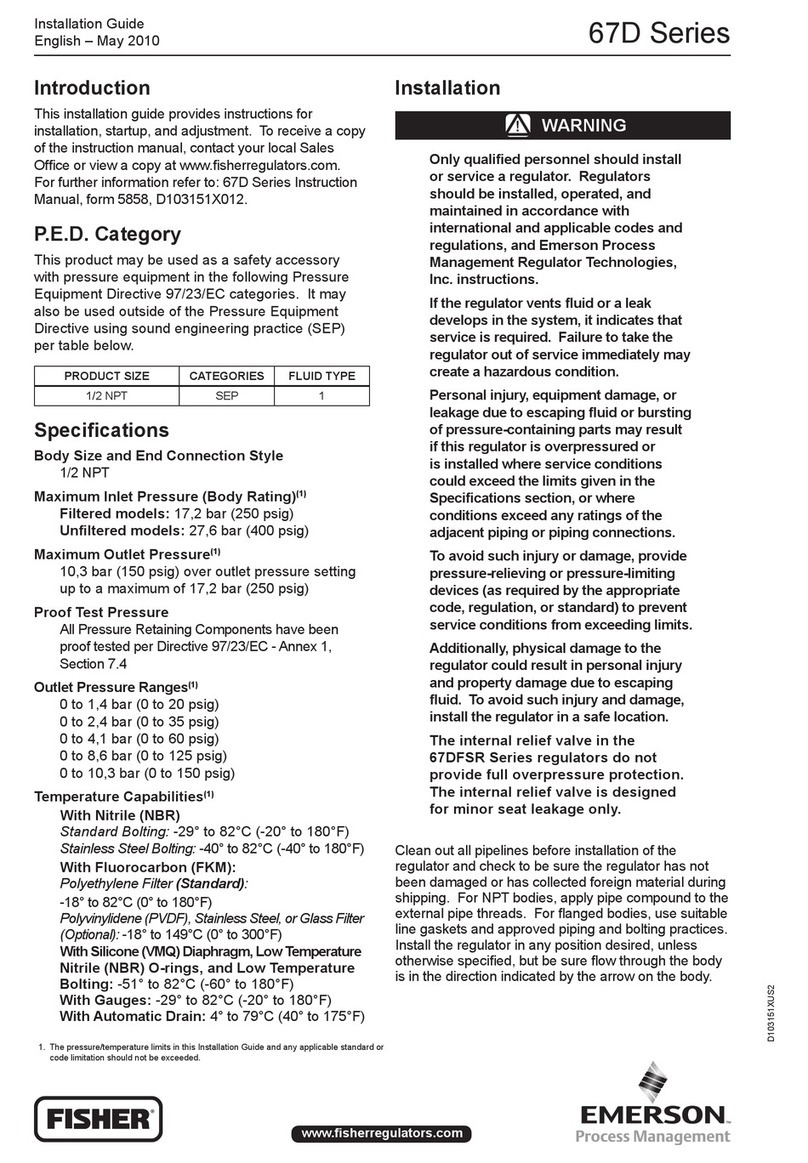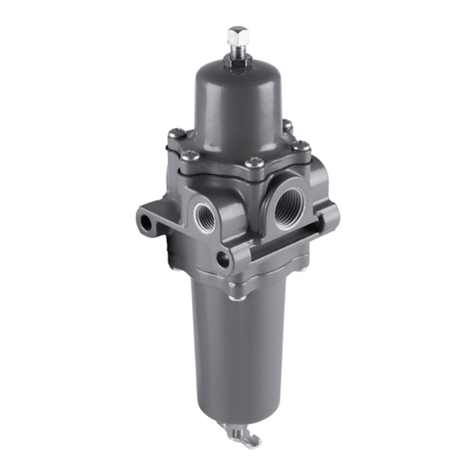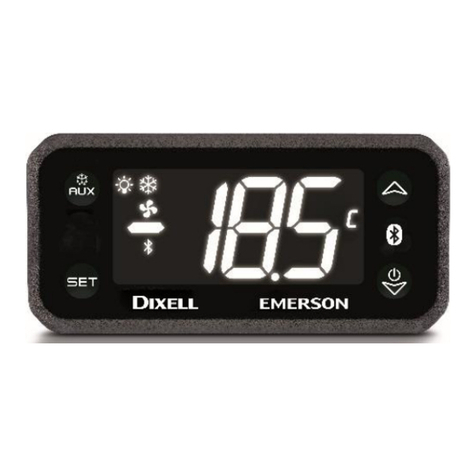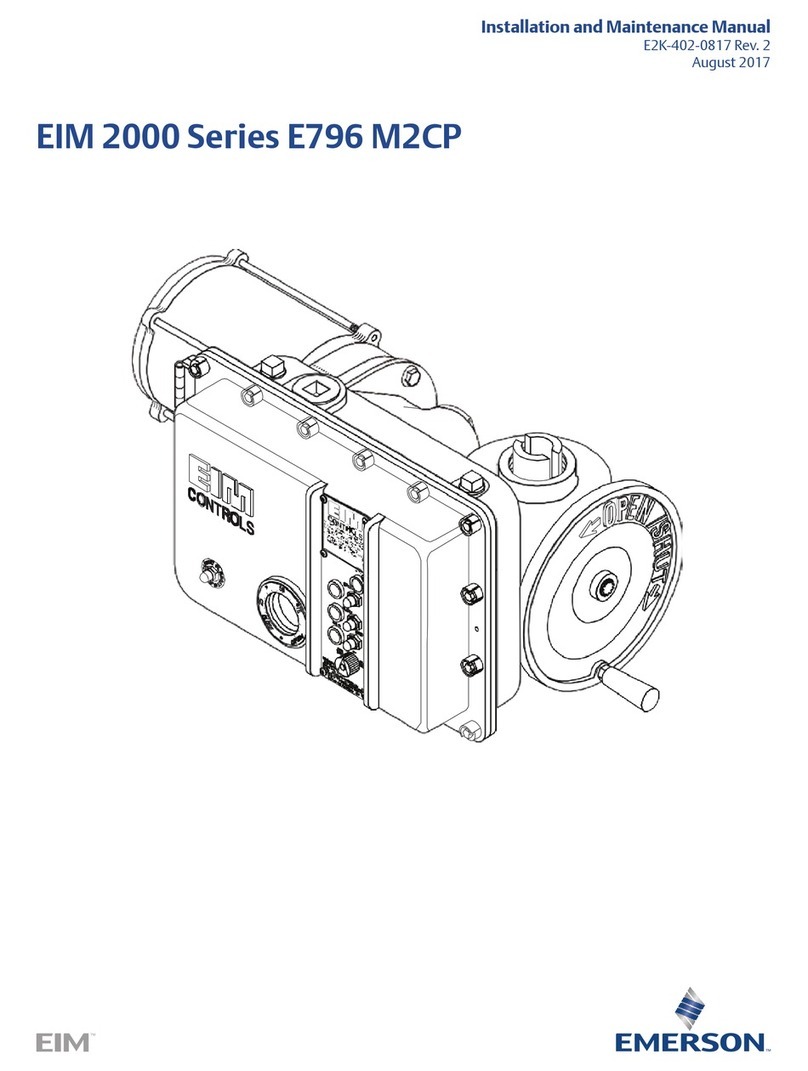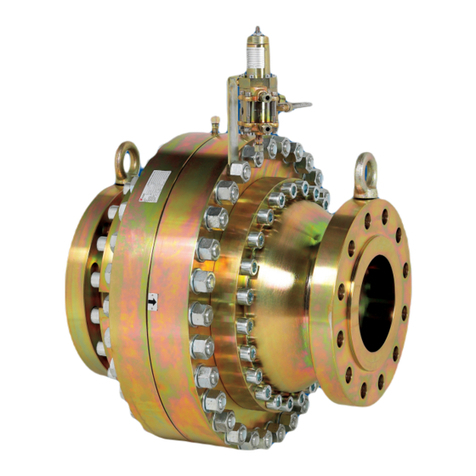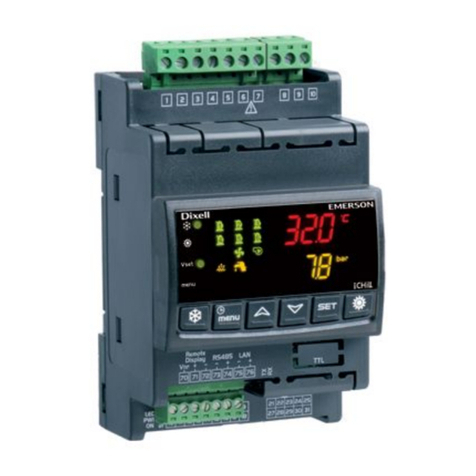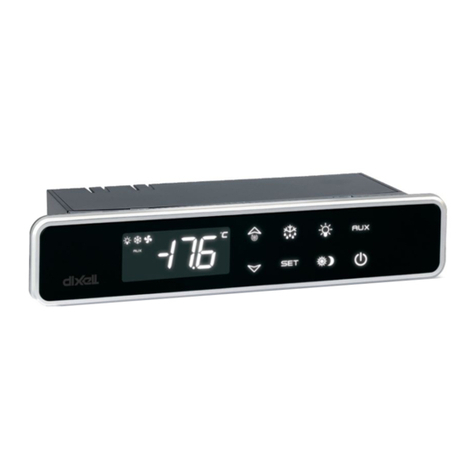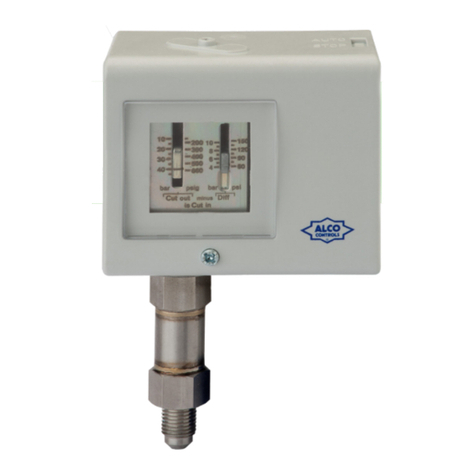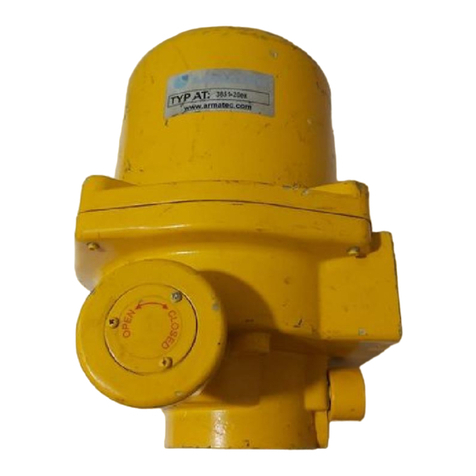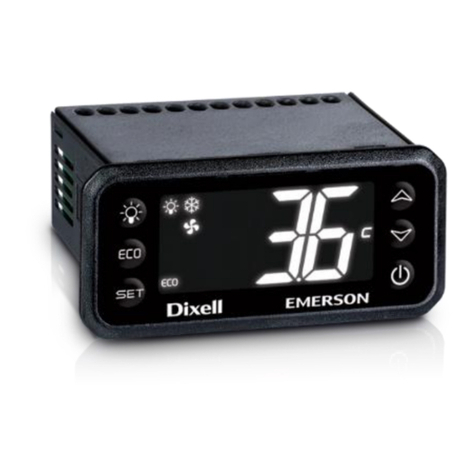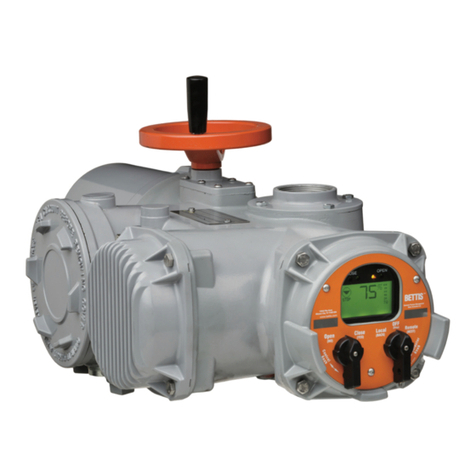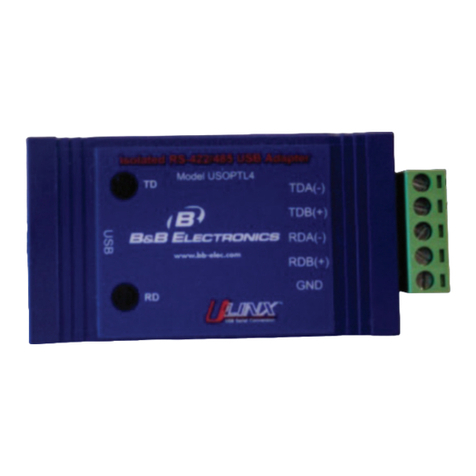
1592020010 XR10CX GB m&M r1.1 27.03.2015 XR10CX 2/4
6. MAIN FUNCTIONS
6.1 HOW TO SEE THE SETPOINT
1. Push and immediately release the SET key: the display will show
the Set point value;
2. Push and immediately release the SET key or wait for 5 seconds to
display the probe value again.
6.2 HOW TO CHANGE THE SETPOINT
1. Push the SET key for more than 2 seconds to change the Set point value;
2. The value of the set point will be displayed and the “°C” or “°F” LED starts blinking;
3. To change the Set value push the o or narrows within 10s.
4. To memorise the new set point value push the SET key again or wait 10s.
6.3 HOW TO CHANGE A PARAMETER VALUE
To change the parameter’s value operate as follows:
1. Enter the Programming mode by pressing the Set + nkeys for 3s (the “°C” or “°F” LED
starts blinking).
2. Select the required parameter. Press the “SET” key to display its value
3. Use “UP” or “DOWN” to change its value.
4. Press “SET” to store the new value and move to the following parameter.
To exit: Press SET + UP or wait 15s without pressing a key.
NOTE: the set value is stored even when the procedure is exited by waiting the time-out to
expire.
6.4 THE HIDDEN MENU
The hidden menu Includes all the parameters of the instrument.
6.4.1 HOW TO ENTER THE HIDDEN MENU
1. Enter the Programming mode by pressing the Set + nkeys for 3s (the “°C” or “°F” LED
starts blinking).
2. Released the keys, then push again the Set+nkeys for more than 7s. The Pr2 label will
be displayed immediately followed from the HY parameter.
NOW YOU ARE IN THE HIDDEN MENU.
3. Select the required parameter.
4. Press the “SET” key to display its value
5. Use o or nto change its value.
6. Press “SET” to store the new value and move to the following parameter.
To exit: Press SET + o or wait 15s without pressing a key.
NOTE1: if none parameter is present in Pr1, after 3s the “noP” message is displayed. Keep
the keys pushed till the Pr2 message is displayed.
NOTE2: the set value is stored even when the procedure is exited by waiting the time-out to
expire.
6.4.2 HOW TO MOVE A PARAMETER FROM THE HIDDEN MENU TO
THE FIRST LEVEL AND VICEVERSA.
Each parameter present in the HIDDEN MENU can be removed or put into “THE FIRST
LEVEL” (user level) by pressing “SET + n”.
In HIDDEN MENU when a parameter is present in First Level the decimal point is on.
6.5 HOW TO LOCK THE KEYBOARD
1. Keep pressed for more than 3 s the UP + DOWN keys.
2. The “POF” message will be displayed and the keyboard will be locked. At this point it will
be possible only to see the set point or the MAX o Min temperature stored
3. If a key is pressed more than 3s the “POF” message will be displayed.
6.6 TO UNLOCK THE KEYBOARD
Keep pressed together for more than 3s the o and nkeys, till the “Pon” message will be
displayed.
6.7 THE ON/OFF FUNCTION
With “onF = oFF”, pushing the ON/OFF key, the instrument is switched off. The
“OFF” message is displayed. In this configuration, the regulation is disabled.
To switch the instrument on, push again the ON/OFF key.
WARNING: Loads connected to the normally closed contacts of the relays are always
supplied and under voltage, even if the instrument is in stand by mode.
7. PARAMETERS
REGULATION
Hy Differential: (0,1 ÷ 25,5°C / 1÷255 °F) Intervention differential for set point. Compressor
Cut IN is Set Point + differential (Hy). Compressor Cut OUT is when the temperature
reaches the set point.
LS Minimum set point: (- 50°C÷SET/-58°F÷SET): Sets the minimum value for the set point.
US Maximum set point: (SET÷110°C/ SET÷230°F). Set the maximum value for set point.
Ot Thermostat probe calibration: (-12.0÷12.0°C; -120÷120°F) allows to adjust possible
offset of the thermostat probe.
P3P Third probe presence (P3): n= not present:, the terminal operates as digital input.; y=
present:, the terminal operates as third probe.
O3 Third probe calibration (P3): (-12.0÷12.0°C; -120÷120°F). allows to adjust possible
offset of the third probe.
P4P Fourth probe presence: (n = Not present; y = present).
o4 Fourth probe calibration: (-12.012.0°C) allows to adjust possible offset of the fourth
probe.
OdS Outputs activation delay at start up: (0÷255min) This function is enabled at the initial
start up of the instrument and inhibits any output activation for the period of time set in
the parameter.
AC Anti-short cycle delay: (0÷50 min) minimum interval between the compressor stop and
the following restart.
COn Compressor ON time with faulty probe: (0÷255 min) time during which the
compressor is active in case of faulty thermostat probe. With COn=0 compressor is always
OFF.
COF Compressor OFF time with faulty probe: (0÷255 min) time during which the
compressor is OFF in case of faulty thermostat probe. With COF=0 compressor is always
active.
CH Type of action: CL = cooling; Ht = heating.
DISPLAY
CF Temperature measurement unit: °C=Celsius; °F=Fahrenheit. WARNING: When the
measurement unit is changed the SET point and the values of the parameters Hy, LS,
US, Ot, ALU and ALL have to be checked and modified if necessary).
rES Resolution (for °C): (in = 1°C; dE = 0.1 °C) allows decimal point display.
dLy Display delay: (0 ÷20.0m; risul. 10s) when the temperature increases, the display is
updated of 1 °C/1°F after this time.
ALARMS
ALC Temperature alarms configuration: (Ab; rE)
Ab= absolute temperature: alarm temperature is given by the ALL or ALU values. rE =
temperature alarms are referred to the set point. Temperature alarm is enabled when the
temperature exceeds the “SET+ALU” or “SET-ALL” values.
ALU MAXIMUM temperature alarm: (SET÷110°C; SET÷230°F) when this temperature is
reached the alarm is enabled, after the “ALd” delay time.
ALL Minimum temperature alarm: (-50.0 ÷ SET°C; -58÷230°F when this temperature is
reached the alarm is enabled, after the “ALd” delay time.
AFH Differential for temperature alarm recovery: (0,1÷25,5°C; 1÷45°F) Intervention
differential for recovery of temperature alarm.
ALd Temperature alarm delay: (0÷255 min) time interval between the detection of an alarm
condition and alarm signalling.
dAO Exclusion of temperature alarm at startup: (from 0.0 min to 23.5h) time interval
between the detection of the temperature alarm condition after instrument power on and
alarm signalling.
CONDENSER TEMPERATURE ALARM (detected by the fourth probe)
AP2 Probe selection for temperature alarm of condenser: nP = no probe; P1 =thermostat
probe; P2 = evaporator probe; P3 =configurable probe; P4 = Probe on Hot Key plug.
AL2 Low temperature alarm of condenser:(-55÷150°C) when this temperature is reached
the LA2 alarm is signalled, possibly after the Ad2 delay.
Au2 High temperature alarm of condenser:(-55÷150°C) when this temperature is reached
the HA2 alarm is signalled, possibly after the Ad2 delay.
AH2 Differential for temperature condenser alarm recovery:(0,1÷25,5°C; 1÷45°F)
Ad2 Condenser temperature alarm delay: (0÷255 min) time interval between the detection
of the condenser alarm condition and alarm signalling.
dA2 Condenser temperature alarm exclusion at start up: (from 0.0 min to 23.5h, res.
10min)
bLL Compressor off with low temperature alarm of condenser:n = no: compressor
keeps on working; Y = yes, compressor is switched off till the alarm is present, in any
case regulation restarts after AC time at minimum.
AC2 Compressor off with high temperature alarm of condenser:n = no: compressor
keeps on working; Y = yes, compressor is switched off till the alarm is present, in any
case regulation restarts after AC time at minimum.
DIGITAL INPUT
i1P Digital input polarity: oP: the digital input is activated by opening the contact; CL: the
digital input is activated by closing the contact.
i1F Digital input configuration: EAL = external alarm: “EA” message is displayed; bAL =
serious alarm “CA” message is displayed. PAL = pressure switch alarm, “CA” message
is displayed; dor = door switch function; dEF = not enabled; AUS = not enabled; Htr =
kind of action inversion (cooling –heating); FAn = do not set it; ES = Energy saving.
did:(0255 min) with i1F= EAL or i1F = bAL digital input alarm delay: delay between the
detection of the external alarm condition and its signalling.
with i1F= dor: door open signalling delay
with i1F = PAL: time for pressure switch function: time interval to calculate the
number of the pressure switch activation.
nPS Pressure switch number: (0
15) Number of activation of the pressure switch, during
the “did” interval, before signalling the alarm event (I2F= PAL).
If the nPS activation in the did time is reached, switch off and on the instrument to
restart normal regulation.
odc Compressor status when open door: no;Fan = normal; CPr; F_C = Compressor
OFF.
rrd Outputs restart after doA alarm: no = outputs not affected by the doA alarm; yES =
outputs restart with the doA alarm;
HES Temperature increase during the Energy Saving cycle : (-30,0°C
30,0°C/-22÷86°F)
it sets the increasing value of the set point during the Energy Saving cycle.
OTHER
Adr Serial address (1÷244): Identifies the instrument address when connected to a
ModBUS compatible monitoring system.
PbC Type of probe: it allows to set the kind of probe used by the instrument: PbC = PBC
probe, ntc = NTC probe.
onF on/off key enabling: nu = disabled; oFF = enabled; ES = not set it.
dP1 Thermostat probe display
dP3 Third probe display- optional.
dP4 Fourth probe display.
